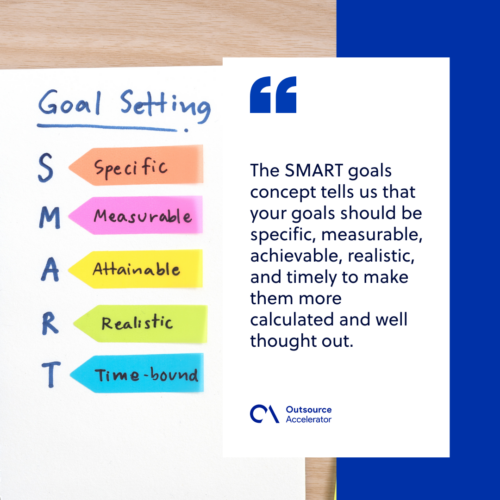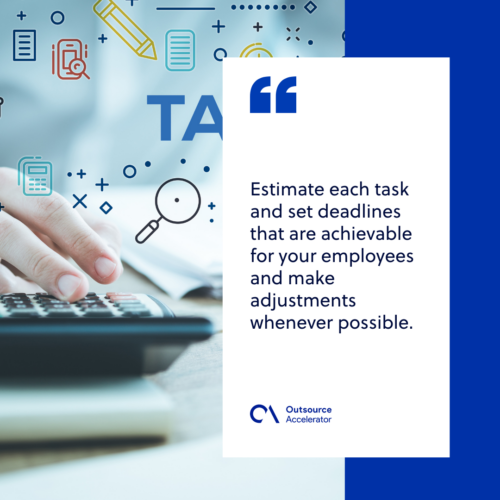Be an expert in managing workload through these quick and easy steps

A modern-day workplace requires high productivity and efficiency from teams.
Nowadays, companies have to continuously meet customers’ demands. Proper and effective ways of managing workload need to be implemented as soon as possible.
As a manager, you have the responsibility to make sure your team is productive, focused, and on track without using them up too much.
One of the difficulties in maintaining a high-performing team is work-related stress, which could result in burnout.
Managing workload according to your team’s capacity is crucial in making progress for your company. While this is not easy at first, you can be an expert in managing your team’s workload in the following ways.
Managing your workload matters because…
Workload management covers the equal distribution of workload to each team member while tracking their performance and productivity.
While team members are responsible for managing their personal workload effectively, project managers usually distribute tasks according to their team’s capacity.
In a study conducted by Gallup, around two-thirds of full-time employees experience burnout. One of the main reasons for this pertains to unmanageable workload.
Managing workload across teams benefits the organization in the following ways:
- Decreased stress. Strategic workload management decreases employees’ stress at work, leading to a better work-life balance and a happier environment.
- Increased productivity. This even boosts their productivity, whether short-term or long-term. With effective workload management, employees get to manage themselves along with their workload, making them more efficient.
- Developing positive coping behaviors. Managing workload properly helps employees develop better decision-making and coping abilities.
- Having better fulfillment. Employees feel more satisfied and fulfilled with having a “good day’s work.” This is better achieved when employees don’t have too many job demands within them.

Strategies for managing workload
Contrary to the belief, effective team workload management involves more than tasks and hours. It comes with strategic planning, estimating, and tracking of tasks aiming to balance tasks across the team and meet their expected deadlines.
In managing workload, you have to create a balance between deadlines, tasks, and skill sets to match your employees’ strengths.
This poses a challenge when managing a remote team at first. However, it is possible with the following methods and strategies.
Planning using SMART goals
Managing workload effectively starts with proper planning and defining of goals. Similar to building processes, SMART goals can add structure to managing and distributing the workload to your teams.
Studies prove that you and your team are 42% more likely to achieve your goals when you write them down.
The SMART goals concept tells us that your goals should be specific, measurable, achievable, realistic, and timely to make them more calculated and well thought out.
Prioritizing tasks with the Eisenhower matrix
There will always come a time when almost all of your tasks are deemed as either urgent or a priority. You can avoid cramming all of your deadlines and workload at once using the Eisenhower matrix.
First penned by Dwight Eisenhower, the matrix helps you identify and distribute your tasks according to their urgency and importance.
The Eisenhower matrix divides your project tasks into four categories:
- To-Do – These are tasks that should be prioritized and done according to their deadline.
- To-Schedule – These tasks, while valuable, can be scheduled at a later time or date.
- To-Delegate – Tasks falling in this category should be divided into teams accordingly.
- To-Delete – While you might rarely use this in your team, you can include activities that could cause a distraction to this box.
Utilizing project management techniques
Lastly, project management techniques and methodologies are there to help you organize your team’s workload better.
Among the strategies listed, these techniques show you the actual game plan for managing your workload, making it easier for you to track your employees’ progress and defined goals.
There’s no one-size-fits-all in project management. What works for you may vary depending on your deliverables, workflows, and even the nature of the business you’re in.
Some of the common project management methods are as follows.
Waterfall method
Known as the Waterfall model, this shows a sequential process of how a certain task or project will flow. True to its name, the model is depicted in the form of a waterfall and follows the adage of “measure twice, cut once.”
Agile management
One of the most common processes, Agile is treated as more of a project management principle. It opens a more collaborative, data-backed, and individual-focused approach to managing tasks.
Scrum management
Scrum, meanwhile, is fit for teams with 10 employees or less. It is composed of short “sprints” or working cycles lasting up to two weeks with specific deadlines indicated.
Teams using Agile management can even try this at least once.
Kanban method
Lastly, the Kanban method uses visual elements to show backlogs and tasks in progress. It helps you visualize your team’s workflows better and decrease the possibility of creating bottlenecks.

Having difficulty in managing your team’s workload? Follow these tips
Mastering your workload management skills takes time and effort from the entire team.
If you’re experiencing difficulties in managing your workload, you can do the following workload management practices:
Minimize distractions
Nowadays, distractions are all around the corner. Your team can easily get distracted by social media, chatty coworkers, phone notifications, and even household chores, with employees rendering work from home.
Social interactions are essential to prevent having a negative work environment. However, excessive interactions can distract them from working properly.
Encourage them to minimize their distractions when working. Impose short breaks so they can loosen up and take time to do the things they want.
Acknowledge that your team cannot do it all
At the end of the day, your employees are still humans. They cannot work beyond their capacities even if they think they might. Overworking your employees could cause them to experience burnout.
Instead, work with your team’s capacities and skillsets. Estimate each task and set deadlines that are achievable for your employees, and make adjustments whenever possible.
Take your time in planning
Even when you’re working on an urgent deadline, do not rush to get started with a project.
Take your time in mapping out your goals, desired outcomes, metrics, and possible challenges. Spend time creating strategies and work distribution per week.
At the same time, learn to be flexible with your strategies. It’s better to be prepared when facing challenges beyond your control than to waste more time fixing things.
Divide complex tasks into subtasks
It’s natural to encounter complex or bigger tasks that would take time to get done. With this, help your employees divide their work into smaller pieces.
This strategy simplifies the work for them, making it more manageable and easier to accomplish.
Automate tasks when needed
Treat automation as a friend you can count on.
According to a survey by Smartsheet, 40% of their respondents still spend “at least a quarter of their week” doing repetitive tasks. Yet, most of the time spent on manual tasks can be used for more valuable work instead.
Your team can always automate some of your workloads when needed. Utilize online project management and collaboration tools to get work done easier.

Tools for workload management
Whether you’re a solopreneur, manager, or team leader, managing your workload is challenging. Your tasks increase as the company grows.
While you can’t simply plan and strategize work distribution manually, several online tools can help you accomplish effective workload management.
ClickUp
ClickUp is a cloud-based project management tool suitable for businesses of all sizes and industries. It presents tasks in Kanban form, each categorized according to their status.
One of the advantages of using the platform is its interface. Users can assign, create checklists, and drag and drop tasks to their respective columns when needed.
Asana
Asana is a collaboration and workload management platform loved by most productivity enthusiasts today. It is even the simplest tool to use on the list.
Here, users can create a checklist of tasks they can assign to their colleagues or themselves. However, compared to other management tools, it lacks a few features, such as resource management.
Trello
Similar to ClickUp, Trello utilizes the Kanban method to manage workload. According to its website, the platform can be compared to “a whiteboard filled with lists of sticky notes” of a team’s tasks and progress.
It even works the same as ClickUp, where users can assign and drag and drop tasks to other columns.
Basecamp
Lastly, Basecamp provides a full-on approach to managing your team’s workload. In addition to tasks and deadlines, users can utilize the platform for basic communication and file management.
They can post discussions, announcements, and attachments for easier collaboration. Yet, among the tools listed, its free version only allows up to three projects and 20 persons.
Having an effective workload management strategy
Your process and tools can only go far based on how you manage them. This makes proper workload management important in this manner.
Implementing effective workload management strategies can be done through proper workload planning, time management, and coordination between the project manager and their team members.
With this, regardless of the project’s complexity and requirements, you can guide your team to success in no time!







 Independent
Independent




